Eddie Munson Was Based On A Real Person, Albert Einstein Had A Secret Child That Disappeared, And 19 Other Fascinating Things I Learned This Week
- Oops!Something went wrong.Please try again later.
- Oops!Something went wrong.Please try again later.
🚨 Warning: This article contains mentions of murder, violence, and other sensitive topics. 🚨
1.While I'm sure the thrill of winning an Oscar is absolutely priceless, the raw materials of the statue itself are actually worth about $600. If a winner wants to sell or dispose of their award, they must first offer it to the Academy for the low price of $1 to prevent the coveted statues from ending up in the wrong hands.

2.Stranger Things's Eddie Munson, played by Joseph Quinn, has become one of the breakout characters of Season 4. His storyline, which involves him being accused of a murder he didn't commit because of his love for playing Dungeons & Dragons with the Hellfire Club, was inspired by Damien Echols, who was similarly accused of murder in 1994 as part of the West Memphis Three.

On May 5, 1993, three 8-year-old boys went missing while riding their bikes in West Memphis, Arkansas. The next day, police found their bodies bound and mutilated in a drainage ditch. Authorities believed the murders were tied to devil worship, and immediately turned their attention to Damien Echols, an 18-year-old high school dropout and self-proclaimed Wiccan. A local woman claimed she had evidence that helped police link Echols, his best friend Jason Baldwin, and Jessie Misskelley Jr. to the murders. Misskelley told police that he helped Echols and Baldwin detain the young boys, then left before they were murdered.

In June 1993, all three were arrested, despite the fact that they had alibis, and there was no physical evidence that linked them to the murders. Miskelley went on trial separately. There were several inconsistencies in his testimony, but he was sentenced to first- and second-degree murder and sentenced to life without parole. Miskelley refused to testify at Echols and Baldwin's trial, so the police had to rely on circumstantial evidence, including Echols' interest in Metallica and Stephen King's novels. Both Echols and Baldwin were found guilty of first-degree murder, and Echols was given the death penalty. In 1996, the documentary Paradise Lost aired on HBO. The documentary raised serious doubts about the involvement of the West Memphis Three, and the men soon began receiving support from the public. Two more installments of the documentary were released. In 2011, their convictions were vacated and they were released from prison.

So, what drew the Duffer Brothers to this case while writing Eddie's character arc? "We really wanted that character who’s a metalhead, he’s into Dungeons & Dragons, he’s ultimately a true nerd at heart," Ross said. "But from an outsider’s point of view, they may go, 'This is someone that is scary.' So that’s really where the idea for Eddie came in." Elements of Echols' story, including his interests, are especially visible in the character. “What’s sad about [Eddie's] narrative is that the people who get to know him love him, and the people who don’t have judged him horribly, just because of the way he dresses and just because of his interests."
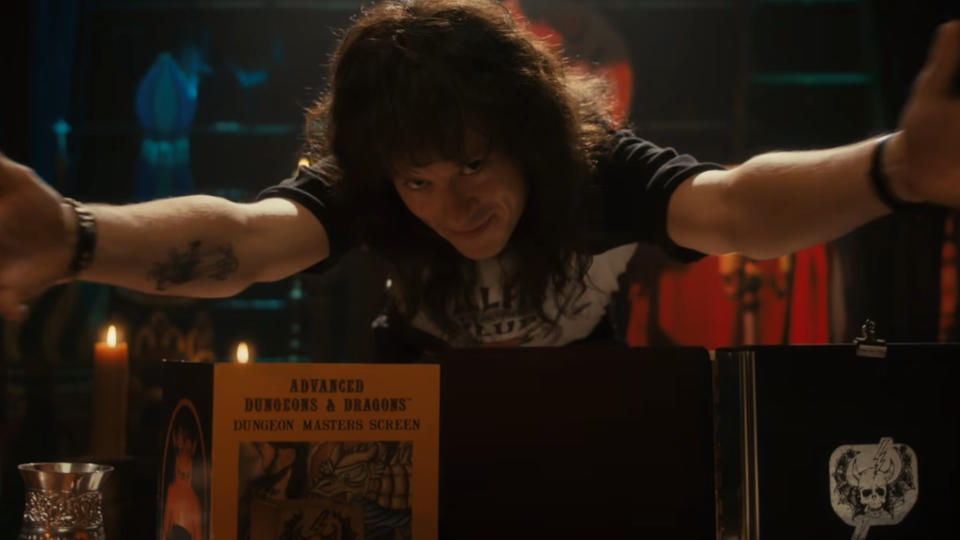
3.In a double rainbow, the colors are reversed from a typical rainbow. Rainbows occur when light refracts off raindrops. A primary rainbow is formed when light reflects only once off the raindrop. The double rainbow comes in when the refracted light reflects off the raindrop for a second time. The reflection reverses the colors, and also results in a less vivid rainbow.
Giphy / Via giphy.com
4.In 1810, Nabby Adams, the daughter of President John Adams, found a lump in her breast and was diagnosed with metastatic breast cancer at age 46. She was treated by Dr. Benjamin Rush, who, in addition to signing the Declaration of Independence, was one of the most prominent physicians of the time. Rush decided that Adams needed a mastectomy immediately if she wanted any chance of survival.
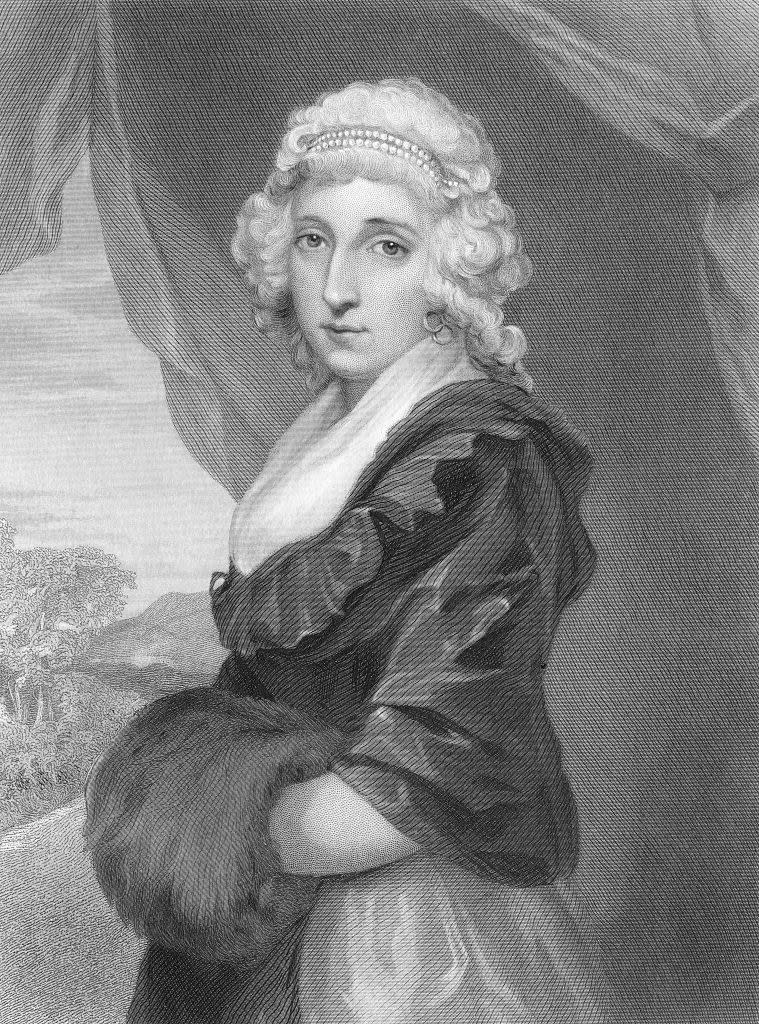
She agreed to the surgery. Due to medical standards at the time, Rush performed the surgery in just 25 minutes with no anesthesia. Adams was left in agonizing pain and was traumatized by the surgery, but survived for two years after the procedure. She died in 1813, likely from complications from the cancer. Adams became known as "a monument to suffering," and represents the time period where physicians were beginning to understand diseases like cancer, but still did not have the adequate tools to treat patients.
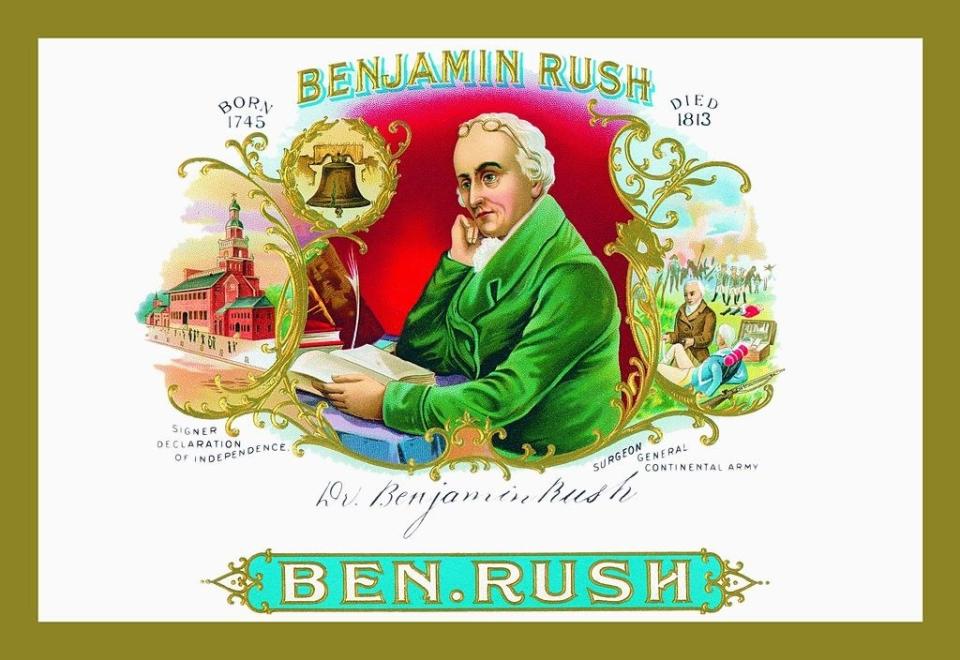
5.If you've ever felt like you're walking around in circles totally lost at a mall, you're not alone. Places like malls and casinos are designed to disorient patrons. This phenomenon is known as the Gruen Transfer, and was developed by Victor Gruen, who helped build the first indoor mall. He wanted to make the mall so alluring that customers would forget what they came in to buy to ensure they would make impulse purchases.

6.While you might have thought that sirens were always beautiful creatures with irresistible charm, they actually were first written as bird-like creatures who lured sailors in through song to disorient them. One of the most famous depictions of the sirens comes from Homer's Odyssey. However, in the epic poem, Homer never actually describes what the sirens look like, so historians have turned to depictions from early Greek art. In works that date back to the fifth century, sirens are portrayed as birds, and are later shown as fish-like creatures as Christianity became more prevalent in Europe.
PBS / Via giphy.com
By the seventh century, the sirens had began to morph into women. In The Book of Monsters, they are described as beautiful women with scales. As mermaid lore grew in popularity, the scales disappeared and sirens were portrayed as beautiful but deadly women. In 1891, John William Waterhouse released a painting that depicted sirens as their original bird-like personas, and received backlash for his interpretation, even though it was technically historically accurate.
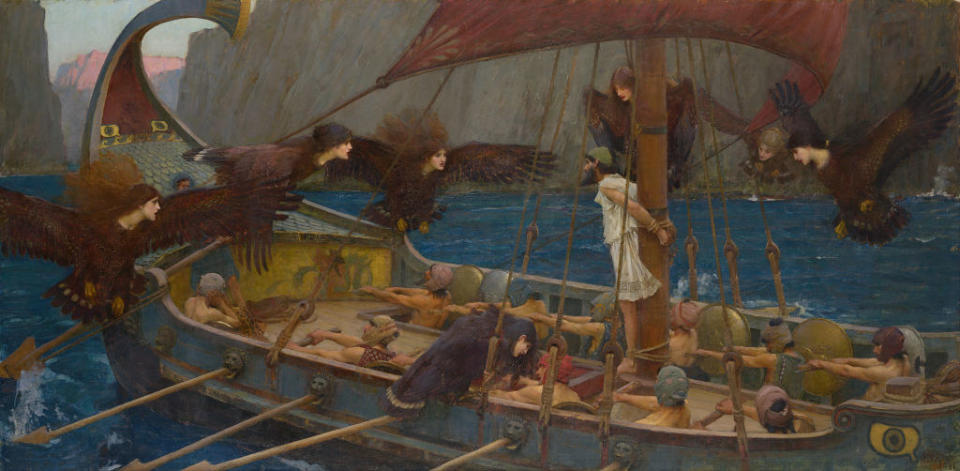
7.Imagine emailing a tree! That's exactly what happened in Melbourne, Australia, when officials assigned trees their own email addresses. The emails were supposed to give residents an opportunity to let city officials know about damaged trees to expedite their restoration, but instead of tips about trees in need of some TLC, they ended up getting tons of emails about how much the residents loved the trees.

8.When The Exorcist hit theaters in 1973, the public knew the horror flick was based on a true story, but had no clue who the actual child was until December 2021. Ronald Edwin Hunkeler, who had previously been known as Roland Doe to protect his identity, underwent several exorcisms in 1949. William Peter Blatty, who wrote both the book and the movie, learned about Hunkeler while attending Georgetown University, and decided to write about his alleged demonic possession and subsequent exorcism attempts.

Hunkeler was raised in Cottage City, Maryland, where he began experiencing paranormal activities at age 14. His family sought help, and eventually connected with William Bowdern, a Jesuit who performed about 20 exorcisms on Hunkeler. By August 1949, the devil had supposedly escaped Hunkeler while he was being treated at a hospital in St. Louis.
Warner Brothers / Via giphy.com
After the exorcisms, Hunkeler went on to work for NASA. He contributed to the Apollo space missions, and even developed a new technology that helped the panels on space shuttles withstand intense heat. Sadly, Hunkeler lived much of his life in fear that his identity would be discovered at work, and that his colleagues would ridicule him for his past. “On Halloween, we always left the house because he figured someone would come to his residence and know where he lived and never let him have peace," one of his close companions said shortly after his death. She also noted that Hunkeler believed that he had never actually been possessed, and shunned religion because of it.

9.In 1983, the Goodyear blimp was named the official city bird of Redondo Beach, California, ahead of the 1984 Olympics, which were held in Los Angeles. The blimp earned the honor after people noted that it was a fixture in town, and wondered where it went anytime it was moved for an appearance.

10.Due to high heat and dangerous levels of pressure, it's nearly impossible for any spacecraft to land on Venus. In fact, Russia is the only country that has ever been able to photograph the planet. In 1975 and 1982, the Soviet Union's Venera probe was able to take the only known images of Venus. The pictures revealed yellow skies and a cracked landscape. Scientists believe this might have been what Earth looked like before experiencing climate change.

11.In the fall of 1967, Otis Redding underwent throat surgery. He was worried that he wouldn't be able to perform the way he used to after the surgery, and decided he was going to write a song that suited his new voice. He wrote "Sitting on the Dock of the Bay" in November 1967, and was so excited about it that he called his guitarist to come to the studio immediately so they could get to work. His record label said they didn't think the song would do well because it didn't fit squarely into any genres.

On December 10, just weeks after recording "Sitting on the Dock of the Bay," Redding died in a plane crash. His record label decided to release the song, which was slightly incomplete. Although his guitarist had been instructed to tweak the song before it could be released, he sent it back as Redding had left it, and the label agreed to release it. "Sitting on the Dock of the Bay" performed incredibly well, becoming Redding's first Billboard No. 1 song. Redding even won two posthumous Grammys for the song.
12.Giraffes have incredibly high blood pressure because of their long necks. While high blood pressure leads to health complications in humans, giraffes have been able to avoid similar issues for a few reasons. Giraffes have a different heart rhythm than that of other mammals, allowing the heart to pump the correct amount of blood to compensate for their elevated blood pressure. They also have a tight wrapping of connective tissue on their legs, which prevents their legs from swelling.
Brookfield Zoo / Via giphy.com
13.When the Strokes released "Last Nite" in 2001, people began drawing comparisons between the song and Tom Petty's "American Girl." Julian Casablancas, lead singer of the Strokes, admitted that they took some inspiration from Petty's song. "People would say, 'You know that song 'American Girl' by Tom Petty?' 'Don’t you think it sounds a little like that?' And I’d be like, 'Yeah, we ripped it off. Where you been?'" In 2006, Petty said he found it hilarious that the Strokes had admitted to ripping off his song, and said he saw no problem with it.

At this point, Petty was no stranger to being a huge influence on new music. Fans had long been comparing Petty's "Mary Jane's Last Dance" and the Red Hot Chili Peppers' song "Dani California." Petty even made some comments about how he thought a lot of rock songs sounded exactly the same, and how he believed lawsuits over pop songs were "frivolous." Despite his supposed distaste for lawsuits, in 2015, Petty sued Sam Smith over their song "Stay With Me," claiming Smith copied off of Petty's 1989 song "I Won't Back Down." The suit was settled out of court, with Smith agreeing to pay Petty royalties for the song.

14.The microwave was invented in 1945 as a total accident. Percy LeBaron Spencer was an engineer working in a lab where they were testing microwave-producing magnetrons. Legend has it that Spencer had a candy bar in his pocket that completely melted when he stood in front of the machinery. From there, he put a bag of unpopped popcorn in front of the magnetron. When it popped, he realized that the microwave radiation could quickly cook food, and soon filed a patent for the first microwave.
Giphy / Via giphy.com
15.Before the 1950s, most TV programming for children was strictly for entertainment, and didn't have much, if any, educational value. In 1952, TV execs sought to change this, and asked Frances Horwich, a teacher who had been known for supervising the development of preschools in Chicago following the Great Depression, to host Ding Dong School, a show designed to both educate and entertain. The first episode of the show aired in Chicago in October 1952, and soon, the network was flooded with letters about how much their children loved the show. Within months, NBC decided to broadcast Ding Dong School all over the country.

Horwich, who had years of experience in education, notably refused to cater to the network's demands if they didn't align with educational goals. In one instance, the network tried to paint strawberries a more vibrant shade of red to allow them to pop on the broadcast. Horwich refused, saying it compromised her show's integrity. After seeing the success of the show, NBC approached her about extending the episode lengths to 60 minutes each. She declined because she believed children didn't have an attention span to sit through shows longer than 30 minutes.
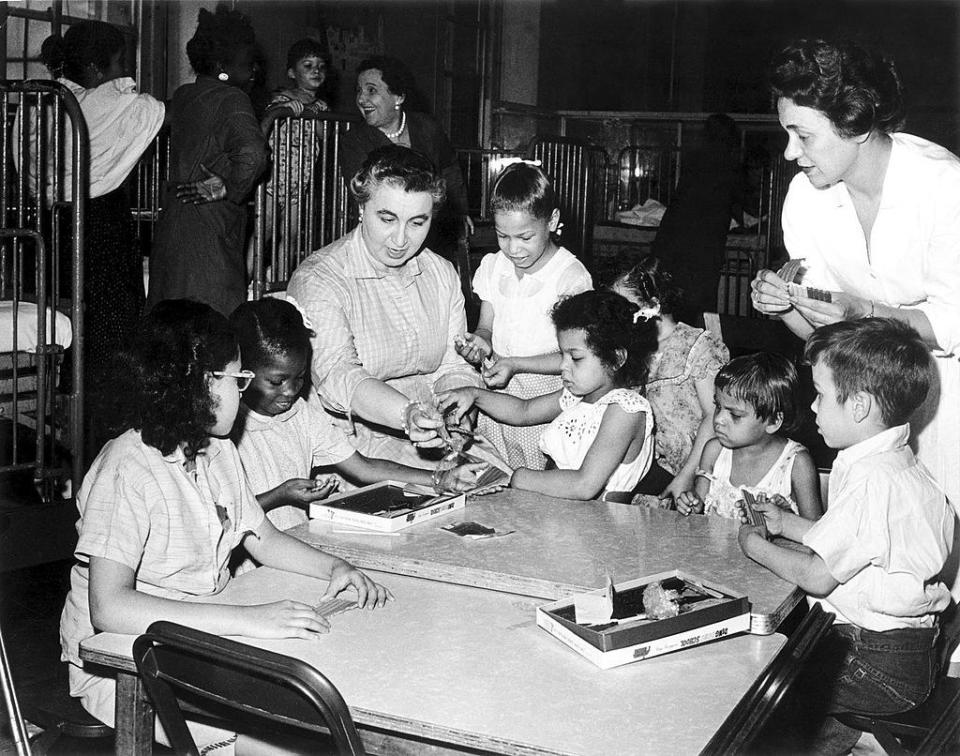
By this point, NBC was well aware of Horwich's expertise, and offered her a job as their corporate supervisor of children's programs. In 1956, she learned NBC planned to air an ad from the maker of BB guns during Ding Dong School. Horwich was horrified and refused to allow the ad to air. NBC canceled the show as a result. The network received over 100,000 letters from fans begging them to bring the show back. The show finally returned to syndication, and later paved the way for programs like Mister Rogers' Neighborhood and Sesame Street.
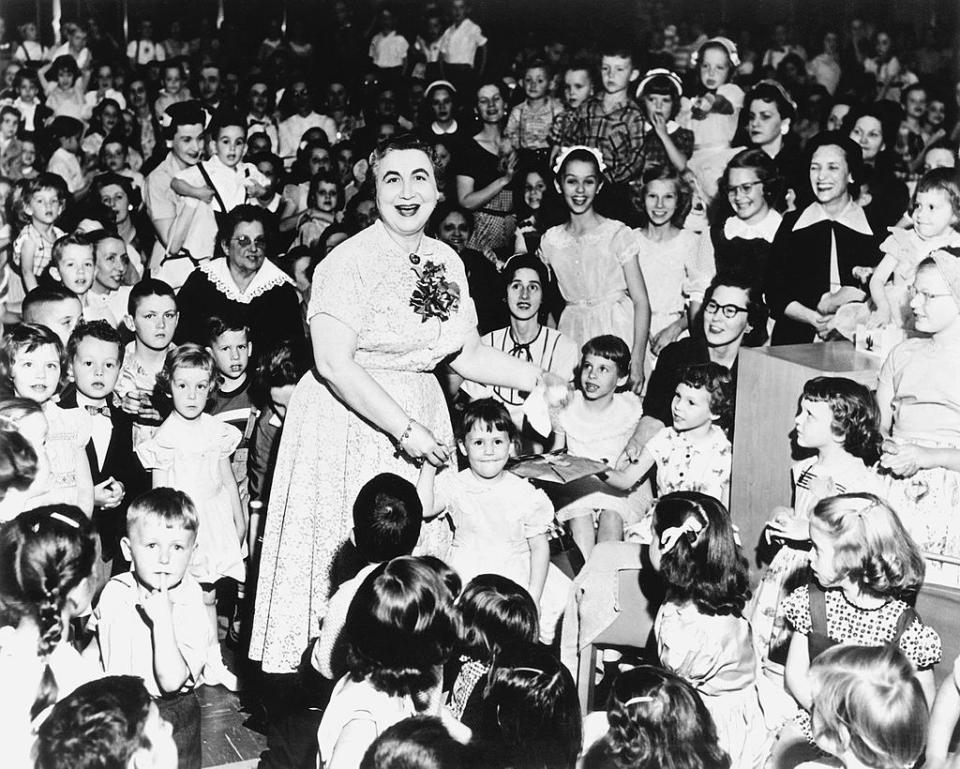
16.The Star Wars theme was purposely written as the perfect segue from the 20th Century Fox opening fanfare, and even saved the fanfare from fading into obscurity. It had been composed in the 1930s, and was seldom used, but George Lucas enjoyed it so much that he wanted to ensure it had a place at the beginning of his films. After Disney purchased Lucasfilm, they stopped using the 20th Century Fox fanfare, upsetting fans.
17.The United States Department of Agriculture keeps a stockpile of over 1.5 billion pounds of cheese and other goods in a series of caves in Springfield, Missouri. It all began in 1949, when the USDA introduced the Dairy Product Price Support Program to support farmers when the price of milk fluctuated by purchasing the excess for a fixed rate. Once the price rose back to normal levels, the USDA would sell off the stock.

The program lasted until 2014, but the government still maintains their stash for food assistance programs. As of May 2022, the USDA is storing an estimated 1.5 billion pounds of cheese, along with 355 million pounds of butter, 211 million pounds of pecans, and just under a billion pounds of french fries.
Bravo / Via giphy.com
18.Mako sharks are known as the "cheetahs of the ocean," and are able to swim up to 60 miles per hour. They have flexible scales that allow them to make tight turns while hunting down prey.

19.It is believed that Albert Einstein and his first wife, Mileva Marić, had a daughter out of wedlock in 1902, when both Albert and Mileva were students at Zurich Polytechnic. In 1901, Mileva abruptly left school and returned home to Serbia, where she gave birth to Lieserl, the couple's first child. By 1903, the couple had married, but there was no sign of Lieserl in any records. In fact, historians had no idea Lieserl even existed until letters found in 1986 revealed her birth and subsequent disappearance.
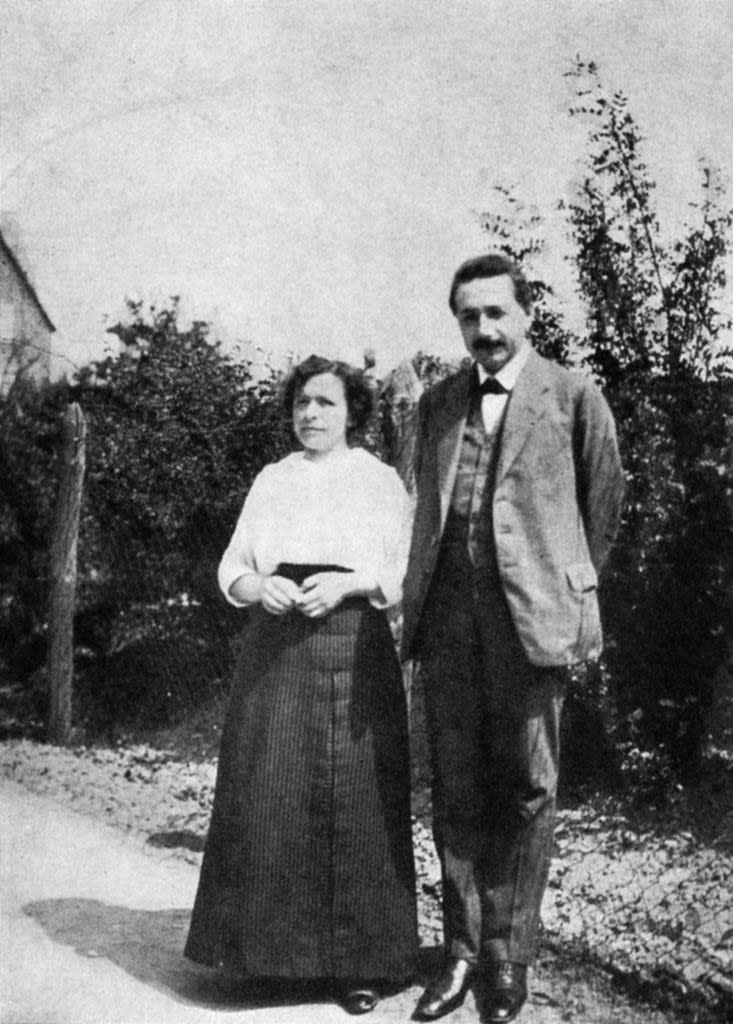
In 1999, Michelle Zackheim published Einstein’s Daughter: The Search for Lieserl, a book investigating what actually happened to Lieserl. In the book, Zackheim hypothesized that the child had been born with developmental disabilities. Mileva left her with her family so she could travel back to Albert, who was finishing up his education in Switzerland. Just before her second birthday, Lieserl died. Some letters insinuate that Lieserl had scarlet fever, although she appears to have recovered in subsequent letters. It's believed that Albert never met his first child. Scholars aren't even sure if Lieserl was the child's real name — it was commonly used as a generic placeholder name in Germany.

20.One of the most memorable lines from Jaws is "You're gonna need a bigger boat," spoken just as the shark emerges from the water. Turns out, the line was totally improvised, and actually came from an inside joke among crew members! Filming on the ocean required a ton of heavy equipment and lots of crew members. The support boat that was used to film scenes at sea often couldn't handle all of the equipment and manpower, so crew members often quipped, "You're gonna need a bigger boat," anytime something went awry. While filming the iconic scene, Roy Scheider decided to add in the joke, and movie history was made. The line even earned a spot on the American Film Institute's list of the top 100 movie quotes, coming it at number 35.
Universal / Via giphy.com
21.And finally, you probably knew Josephine Baker was an Old Hollywood legend, but did you also know she was a spy for the French Resistance during World War II? Baker, whose parents were also performers, made a name for herself as a dancer in Vaudeville shows. She moved to New York City and was a key figure in the Harlem Renaissance, until she headed to Paris, where her fame exploded. By the time World War II dawned, Baker had decided she wanted to take part in the war effort, and served as a French spy.

Baker performed in front of enemies, then passed along secrets and information she heard during the show to the French military. She would write details on sheet music with invisible ink to give to the French. After the war, she returned to the United States. As the civil rights movement gained traction, Baker refused to perform for segregated audiences, and spoke at the March on Washington in 1963. She was recognized by the NAACP for her efforts.


